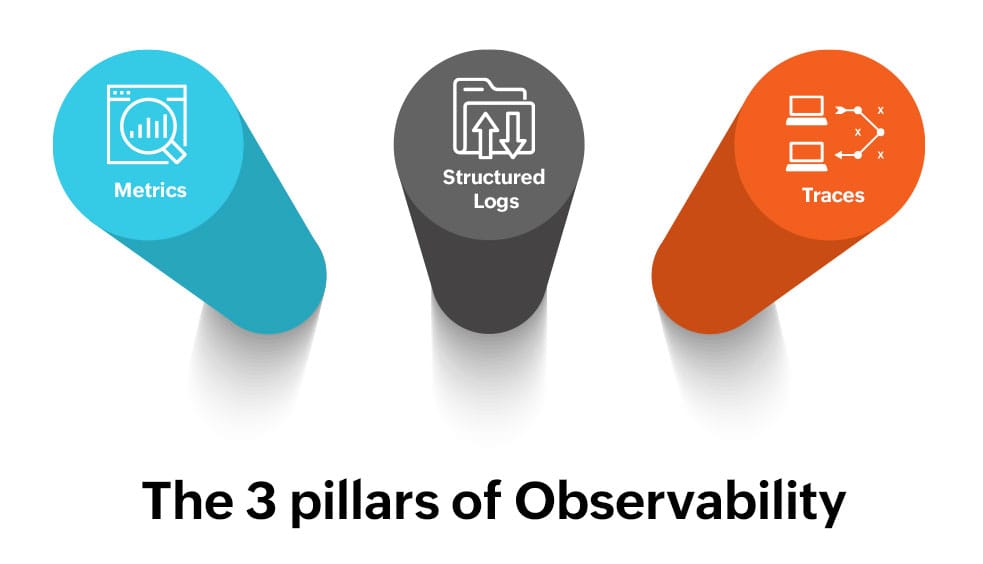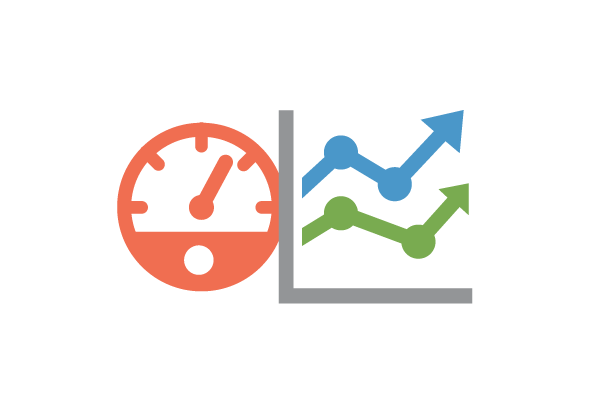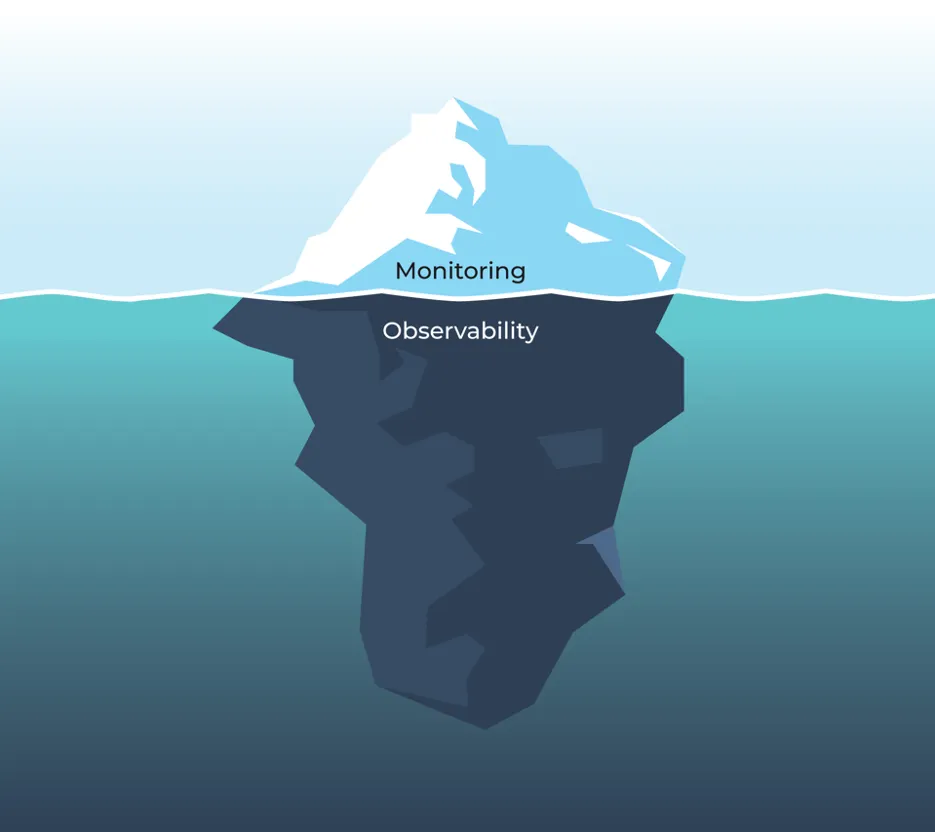Deployed a sleek, high-performance API, only to find yourself baffled by issues later on?
APIs often become black boxes, obscuring problems from view. Harness the power of observability and monitoring to overcome these challenges.
So far you have learned how to:
As a finale to this series, we'll integrate an observability and monitoring tool to prevent unexpected behavior in our API.
And in case you're wondering if I meant multiple tools instead of just one, I did not. There's one tool that reigns supreme.
But before unveiling that tool, let's delve into the concepts mentioned in the title:
- What is observability?
- What is monitoring?
What is observability?
Observability entails grasping the internal state of a system through its output. It involves gaining insights into system performance and behavior without directly accessing its internals.
A prime paradigm for observability is the black box model. While you're aware that activity is occurring within, the internal workings remain hidden. However, you can interpret the internal state based on the output received.
The three pillars of observability are:
- Logs
- Metrics
- Traces
To maximize these pillars, it’s essential to use the right tools. Check out our guide on the top API observability tools for 2024 to explore the best options available.

Upon collecting this telemetry, the platform promptly correlates it in real-time. The greater the observability of your system, the more effectively you can:
- Identify and diagnose problems
- Monitor performance
- Debug with precision
For a more in-depth understanding of observability, check out this comprehensive resource on mastering API health and observability.
What is monitoring?
Monitoring is a continuous process that involves collecting and analyzing data to track system performance, health, and behavior.

One of the most prominent monitoring tools today is the smartwatch. With its capabilities, you can measure various vital signs, such as blood pressure, saturation levels, and sleep quality, among others.
Breaking down the steps of smartwatch monitoring, it typically involves:
- Gathering data based on predefined metrics and indicators (e.g., monitoring heart rate throughout the day).
- Identifying potential issues from normal operation (e.g., prompting a "Be active" notification if activity levels drop).
- Allowing users to make decisions based on the collected data (e.g., receiving a suggestion to engage in walking mode after reaching a certain number of steps, along with more detailed metrics).
For a comprehensive exploration of observability, delve into this blog.
Differences between observability and monitoring?
If you interchange observability and monitoring, you're not alone—I've done it too, along with countless others.

To be frank, observability and monitoring initially appear as "two sides of the same coin."
However, there's a crucial distinction between them.
The key difference lies in the fact that observability relies on monitoring. Put simply, monitoring establishes the groundwork, and observability expands upon it.
To explore the nuances between observability and monitoring, take a look at this detailed API Observability vs API Monitoring article.
“God tool” - Treblle
Now that you're acquainted with the concepts and their disparities, let's kickstart the implementation.
To follow along, ensure you have:
- The latest version of Visual Studio or Visual Studio Code.
- .NET 8 SDK.
Once the setup is complete, proceed to create a Minimal API solution.
In previous examples, we utilized an in-memory collection.
However, this time, we'll switch to a database approach. For the sake of simplicity, I'll opt for SQLite.
Database setup and seed
Setting up is straightforward.
First, let's add the entity.
public class User
{
public int Id { get; init; }
public string Firstname { get; set; }
public string Lastname { get; set; }
public DateOnly Birthdate { get; set; }
public string Username { get; set; }
public string Email { get; set; }
}
Now, add an EF Core database provider for SQLite.
In Visual Studio, navigate to Tools > NuGet Package Manager > Manage NuGet Packages for Solution.
In the search bar, type Microsoft.EntityFrameworkCore.Sqlite and install it.
Now, let's configure the DbContext with a Users DbSet and seed data.
public class PlaygroundContext(DbContextOptions options) : DbContext(options)
{
public DbSet<User> Users { get; init; }
protected override void OnModelCreating(ModelBuilder modelBuilder)
{
var id = 1;
var fakeUsers = new Faker<User>()
.RuleFor(m => m.Id, f => id++)
.RuleFor(m => m.Firstname, f => f.Name.FirstName())
.RuleFor(m => m.Lastname, f => f.Name.LastName())
.RuleFor(m => m.Birthdate, f => f.Date.FutureDateOnly())
.RuleFor(m => m.Username, f => f.Internet.UserName())
.RuleFor(m => m.Email, f => f.Internet.Email());
modelBuilder.Entity<User>()
.HasData(fakeUsers.GenerateBetween(100, 100));
}
}
To generate fake data, I utilized the Bogus library, which facilitates fast creation of fictitious data. Learn more about it here.
The final step in setting up the database is to create migrations and execute them against the database.
To create a migration, use the command: dotnet ef migrations add <migration name>. If the migration is successful, you should see a folder named Migrations.
To perform ansigns, update, utilize dotnet ef database update command.
With the database setup complete, proceed to implement straightforward CRUD endpoints.
public static void MapUserEndpoints (this IEndpointRouteBuilder routes)
{
var group = routes.MapGroup("/api/User")
.WithTags(nameof(User));
group.MapGet("/", async (PlaygroundContext db) =>
{
return await db.Users.ToListAsync();
})
.WithName("GetAllUsers")
.UseTreblle()
.WithOpenApi();
group.MapGet("/{id}", async Task<Results<Ok<User>, NotFound>> (int id, PlaygroundContext db) =>
{
return await db.Users.AsNoTracking()
.FirstOrDefaultAsync(model => model.Id == id)
is User model
? TypedResults.Ok(model)
: TypedResults.NotFound();
})
.WithName("GetUserById")
.WithOpenApi();
group.MapPut("/{id}", async Task<Results<Ok, NotFound>> (int id, User user, PlaygroundContext db) =>
{
var affected = await db.Users
.Where(model => model.Id == id)
.ExecuteUpdateAsync(setters => setters
.SetProperty(m => m.Id, user.Id)
.SetProperty(m => m.Firstname, user.Firstname)
.SetProperty(m => m.Lastname, user.Lastname)
.SetProperty(m => m.Birthdate, user.Birthdate)
.SetProperty(m => m.Username, user.Username)
.SetProperty(m => m.Email, user.Email));
return affected == 1 ? TypedResults.Ok() :
TypedResults.NotFound();
})
.WithName("UpdateUser")
.WithOpenApi();
group.MapPost("/", async (User user, PlaygroundContext db) =>
{
db.Users.Add(user);
await db.SaveChangesAsync();
return TypedResults.Created($"/api/User/{user.Id}",user);
})
.WithName("CreateUser")
.WithOpenApi();
group.MapDelete("/{id}", async Task<Results<Ok, NotFound>> (int id, PlaygroundContext db) =>
{
var affected = await db.Users
.Where(model => model.Id == id)
.ExecuteDeleteAsync();
return affected == 1 ? TypedResults.Ok() :
TypedResults.NotFound();
})
.WithName("DeleteUser")
.WithOpenApi();
}
Once completed, run the application and send a request.
API setup is complete. The final step is to integrate monitoring and observability into the application using Treblle.
Treblle integration
By now, you've likely deduced that the tool mentioned at the outset is Treblle.
It's a comprehensive platform designed to aid in building, shipping, and comprehending REST APIs seamlessly. To see how Treblle can elevate your API observability, explore their API observability product for more details.
The integration process involves four simple steps:
- Sign up or sign in.
- Create a project on their dashboard tailored to your platform.
- Integrate the platform SDK into your application using data from the dashboard (this typically takes less than 5 minutes).
- Hit the endpoint and examine the metrics!
Let's put these steps into practice!
Sing in & sign up
Go to the Treblle and click the Sign in button,perform an or Sign up if you already have an account.
Create a project on dashboard
Upon successful login, you'll be redirected to the Dashboard page, where you'll find the Create a project button.
You'll encounter a form where you'll need to input four pieces of information:
- Name of the project
- Base URL: You can retrieve it from launchSettings.json in the project root directory
- Platform: Choose .NET Core
- Environment: Select "Local," though options for "Development," "Staging," and "Production" are also available.
Upon submission, you'll be redirected back to the Dashboard, where you'll find integration details.
SDK integration
You'll now observe the simplicity of the integration process.
Integrate the corresponding SDK into your application.
Add the service to the DI container with the API Key and Application ID obtained from the Dashboard, and then include the Treblle middleware.
var builder = WebApplication.CreateBuilder(args);
builder.Services.AddEndpointsApiExplorer()
.AddSwaggerGen()
.AddDbContext<PlaygroundContext>(options => options.UseSqlite("DataSource=users.db"));
builder.Services.AddTreblle("<apiKey here>", "<appID here>"); // <-- Add this
var app = builder.Build();
if (app.Environment.IsDevelopment())
{
app.UseSwagger();
app.UseSwaggerUI();
}
app.UseHttpsRedirection();
app.MapUserEndpoints();
app.UseTreblle(useExceptionHandler: true); // <-- Add this
app.Run();
Apply the UseTreblle() extension method to the endpoint you wish to monitor.
group.MapGet("/", async (PlaygroundContext db) =>
{
return await db.Users.ToListAsync();
})
.WithName("GetAllUsers")
.UseTreblle() <-- Add this
.WithOpenApi();
That concludes the integration process!
Hit endpoint and check metrics
Once you access the endpoint on the dashboard, you should observe something similar to this:
Navigate to the API scorecard and click on view details. This action will open a page displaying three cards:
- Performance
- Security
- Quality
Within the Performance card, you'll find the relevant metrics.
And this is just the tip of the iceberg.
You can also:
- Generate API documentation
- Apply various filters (e.g., by device from which requests are sent, by endpoint, etc.)
- View requests per day and per country
Feel free to explore further.
I assure you, it's worth it.
Conclusion
We've delved deep into the world of observability and monitoring for .NET Minimal APIs and Treblle.
Hopefully, you now have a solid understanding of how to keep your APIs healthy and performant.
As your APIs evolve, so should your monitoring practices.
And adding Treblle to be your main API monitoring tool, you'll unlock benefits like:
- Faster issue detection and resolution
- Improved application performance
Make observability and monitoring key things for APIs, because observability gives you the big picture, allowing you to see and understand what's happening within your APIs.
And monitoring takes it a step further by turning those observations into meaningful data, providing clear metrics and alerts to guide your actions.
Start optimizing your API performance today with Treblle. Experience the benefits of real-time monitoring, comprehensive logging, and actionable insights. See how Treblle can enhance your API observability and help you maintain robust and reliable APIs!






